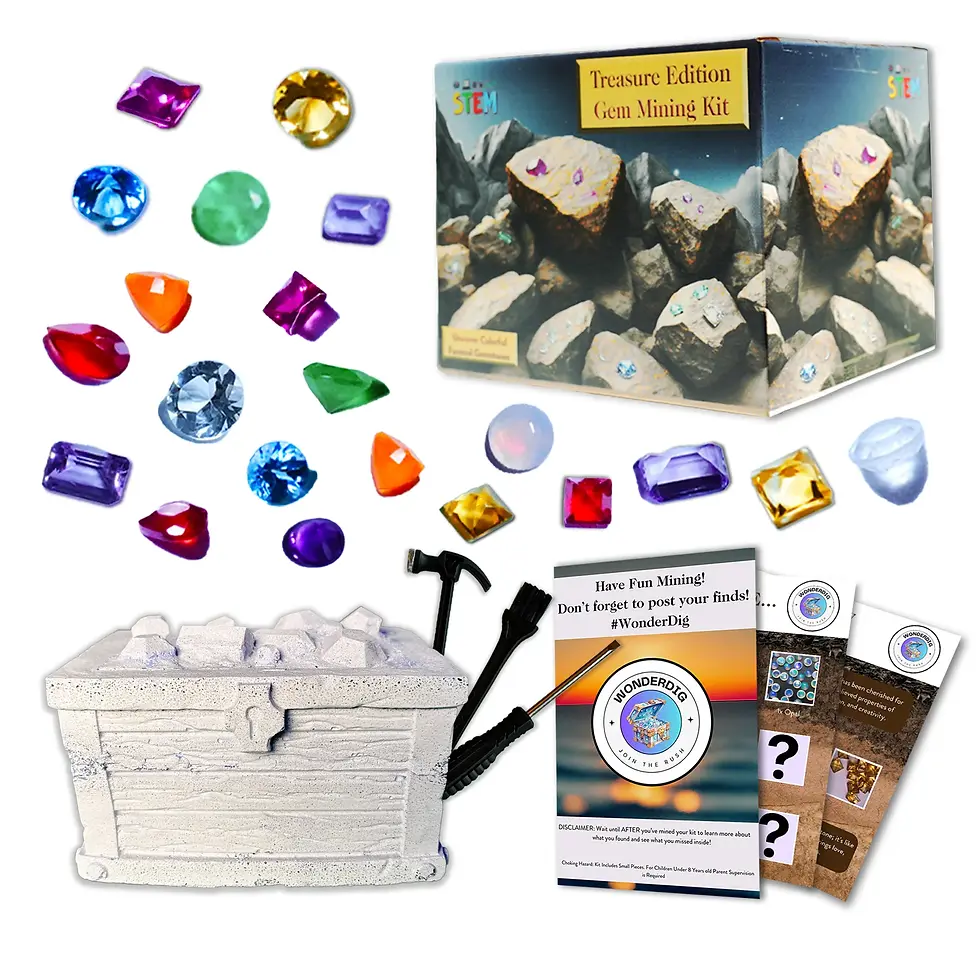Understanding the Mohs Scale: A Comprehensive Guide
Updated: 18 hours ago
The Mohs Hardness Scale is a crucial tool in geology, mineralogy, and material science. Developed by German mineralogist Friedrich Mohs in 1822, the scale ranks minerals based on their ability to scratch another material. This simple, yet effective, scale ranges from 1 to 10, with talc being the softest (rank 1) and diamond the hardest (rank 10) (4Cs GIA) (Rockhounding.org).

What is the Mohs Scale?
The Mohs scale measures the scratch resistance of various minerals through the ability of harder materials to scratch softer ones. It is a qualitative ordinal scale that provides a comparative ranking rather than a quantitative measure of hardness. For example, if a mineral can scratch calcite (hardness 3) but is scratched by fluorite (hardness 4), its hardness is between 3 and 4 (Science Notes and Projects).
Discover Real Gemstones & Crystals – Shop Now!
Explore our collection of gemstone dig kits, crystal gifts, and geodes. Perfect for adventurers and crystal lovers alike! Find something unique, from stunning amethyst clusters to our best-selling Jumbo Dig Kit.


Key Minerals on the Mohs Scale:
Talc (1): The softest mineral, easily scratched by all other materials.
Gypsum (2): Can be scratched by a fingernail.
Calcite (3): Can be scratched by a copper coin.
Fluorite (4): Can be scratched by a knife.
Apatite (5): Can scratch glass and can be scratched by a steel knife.
Orthoclase Feldspar (6): Can scratch glass.
Quartz (7): Can scratch steel and hard glass.
Topaz (8): Can scratch quartz.
Corundum (9): Includes sapphires and rubies, can scratch topaz.
Diamond (10): The hardest known natural material, can scratch all other substances (International Gem Society) (Science Notes and Projects).
Applications of the Mohs Scale:
The Mohs scale is widely used in various fields:
Geology and Mineralogy: It aids in the identification and classification of minerals.
Jewelry: Determines the suitability of gemstones for different types of jewelry based on their durability.
Industrial: Helps in selecting appropriate materials for cutting, grinding, and drilling applications (Rockhounding.org) (Jewelry Secrets).

Differentiating Hardness, Toughness, and Strength:
Hardness: Resistance to scratching.
Toughness: Ability to absorb energy and resist fracturing.
Strength: Ability to withstand an applied force without breaking (Rockhounding.org).
Love Crystals? Watch Our Quick Gem Discovery Videos!
Get bite-sized crystal knowledge and gemstone fun with our YouTube channel. Discover the magic of crystals in less than 60 seconds!
















Comments